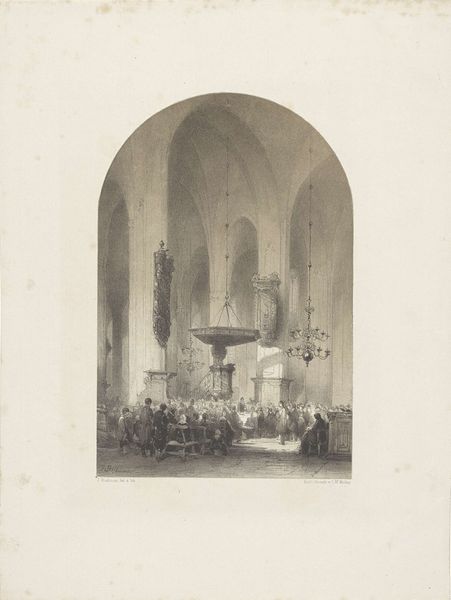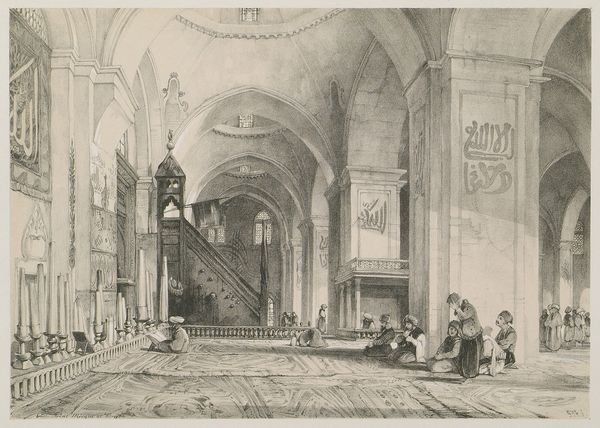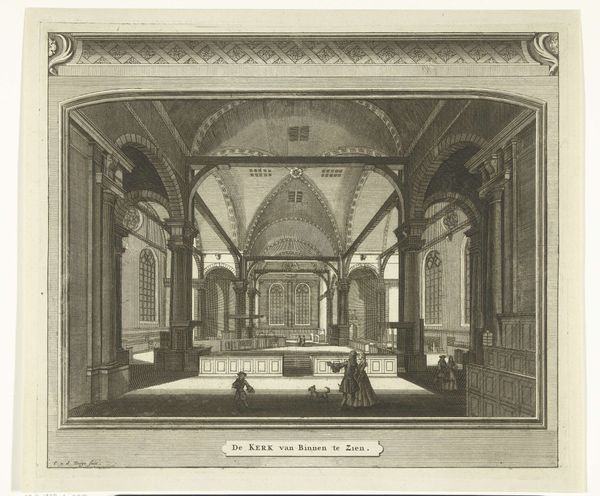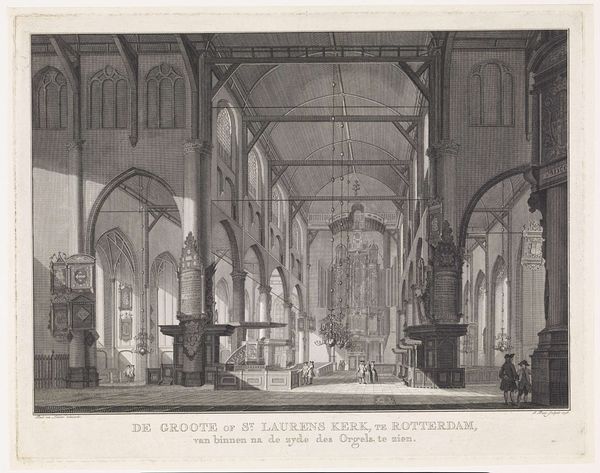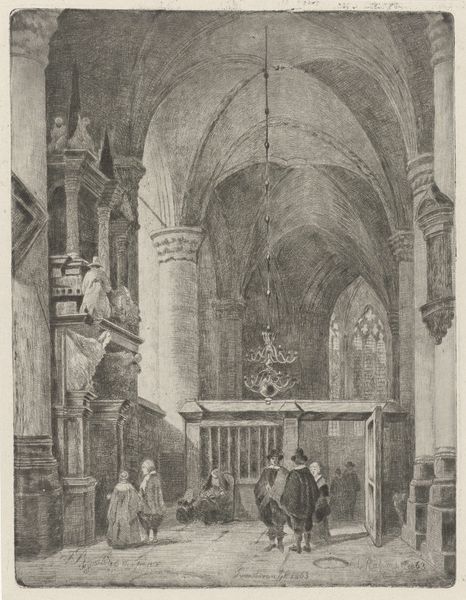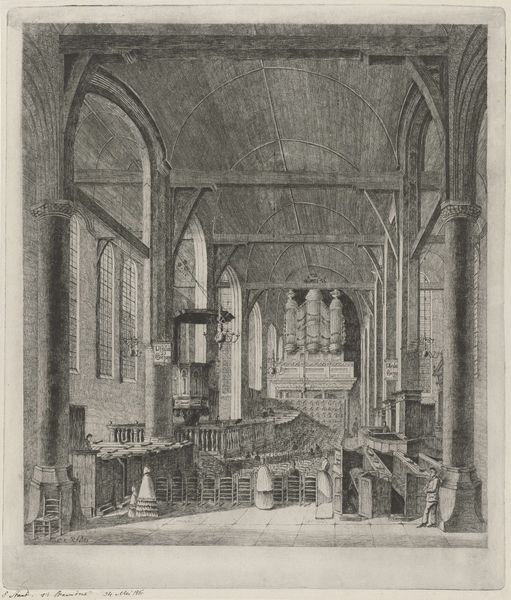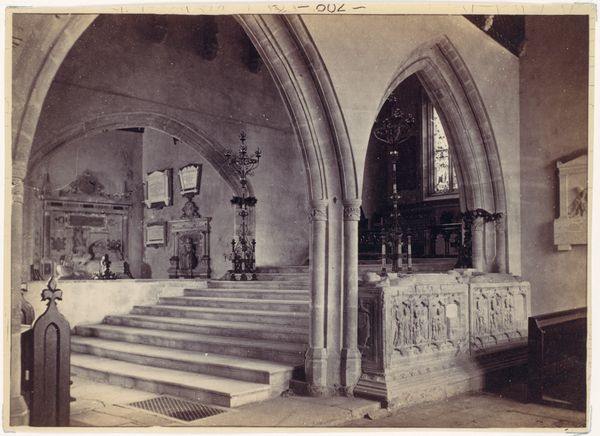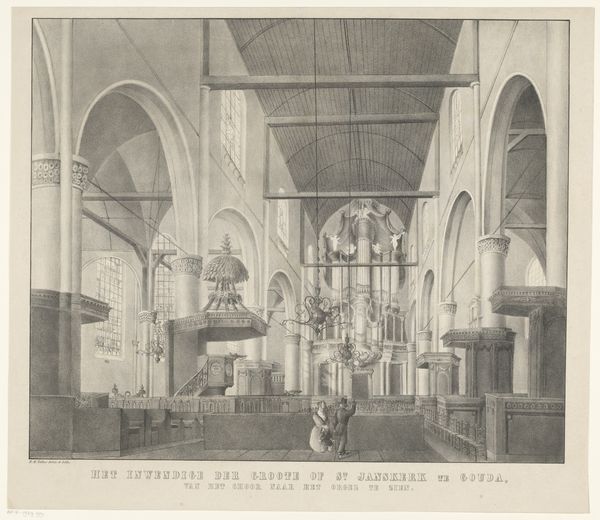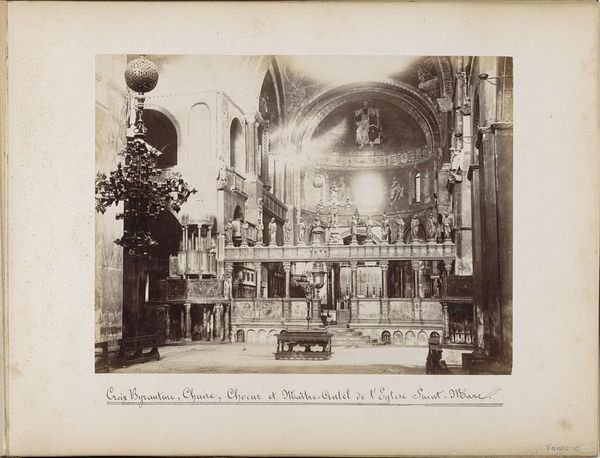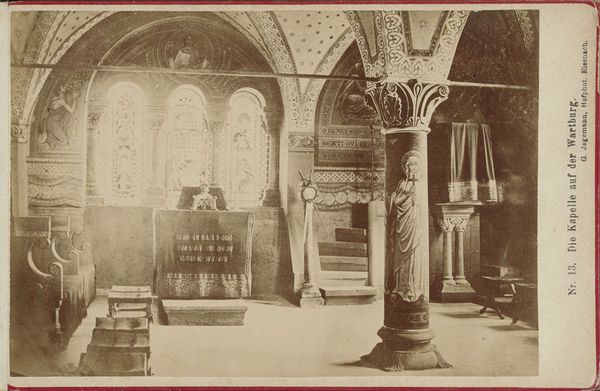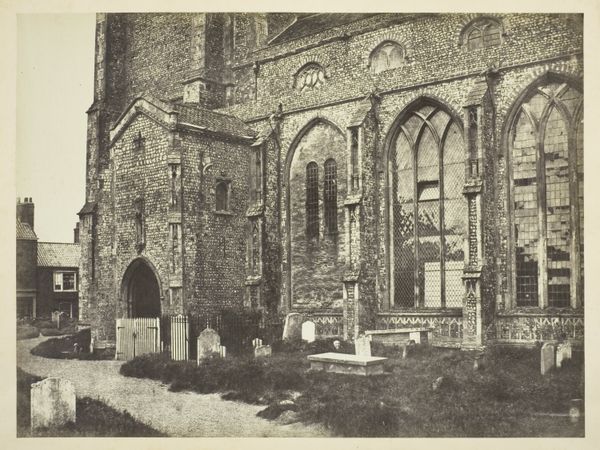
Dimensions: height 461 mm, width 570 mm
Copyright: Rijks Museum: Open Domain
Curator: Here we have "Kerkinterieur," an intriguing drawing and print attributed to Anthony Cornelis Cramer, created sometime between 1852 and 1914. It depicts the interior of a church. Editor: My immediate reaction is a sense of austere tranquility. The muted tones and meticulous detail evoke a feeling of reverence, almost voyeuristic, as if we're peering into a sacred, private moment. Curator: It's interesting you mention that feeling of privacy, as this type of church interior was often seen as a representation of moral order, particularly during the period of religious revival. Think of it as a stage for societal values and quiet, somber contemplation of divine principles. The use of perspective powerfully leads the eye into the scene. Editor: Absolutely. And that linear perspective, combined with the rather stoic depiction of the churchgoers, speaks to the control and restraint imposed by religious institutions on individual expression. Look at how everyone is arranged in such neat, orderly rows! Is there a quiet commentary on conformity here? Curator: I think there's certainly an element of that. Consider how church interiors had long symbolized not just faith, but also the temporal power structures embedded in religious institutions. The light, seemingly divinely sourced, certainly reflects a cultural understanding of churches as holy spaces where God speaks through man. Editor: It's almost oppressive though, isn't it? The weight of tradition seems palpable. Are those figures attending the church out of genuine devotion, or out of social obligation? I wonder what realities of 19th century religious experience in Europe can be brought to light here. What identities were represented or suppressed within these institutions? Curator: Those questions highlight an important point. Works such as these provide insights into the role of faith and its influence on daily lives through both religious activity and moral expectation, documenting how such spaces fostered societal conformity. This piece seems to hint at something that goes deeper than purely faith based spirituality. Editor: For sure. To me, "Kerkinterieur" isn’t just a static depiction of religious space; it’s a window into the complex intersection of faith, social structure, and power. Curator: Yes, the scene allows one to investigate religious practices of the period. Through symbols and depictions of rituals, cultural memory can be revived and interpreted across the ages. Editor: Exactly. This artwork shows us a physical space, but it also creates a conceptual one, prompting us to examine and maybe challenge historical power dynamics and individual agency. It becomes less about the reverence and more about the context around it.
Comments
No comments
Be the first to comment and join the conversation on the ultimate creative platform.
